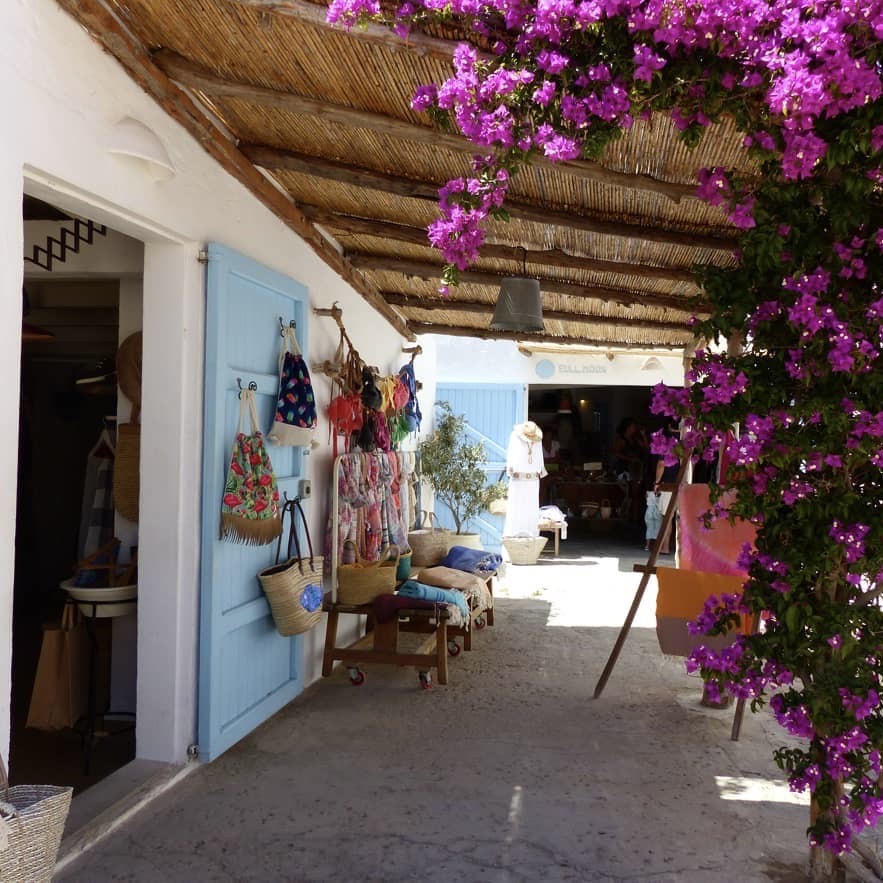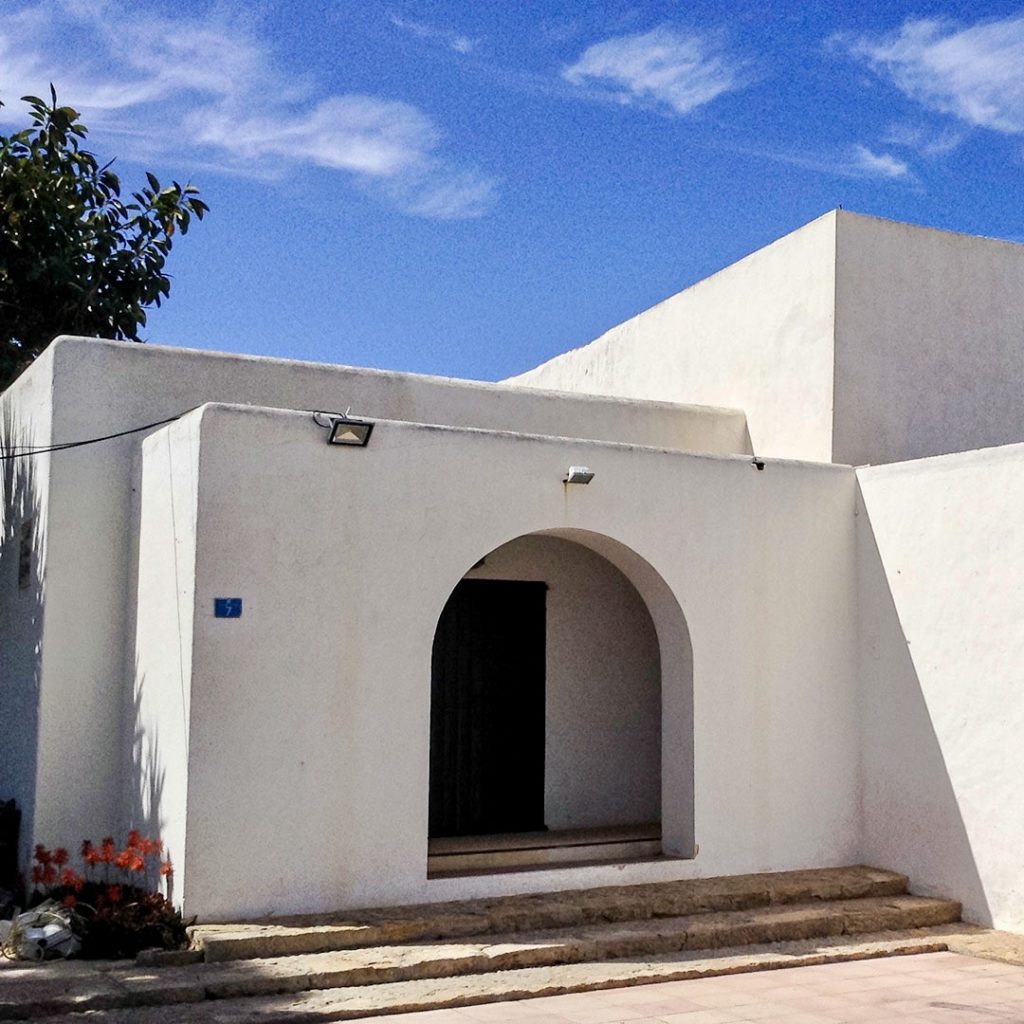Formentera Island, Balearic Islands (Spain)
Formentera is the smallest and southernmost of the inhabited Balearic Islands (Spain). Part of the group of islands known as Las Pitiusas, with Ibiza and the islets of S’Espalmador and S’Espardell, it covers an area of 83,2 km2 with 69 km of coastline of which more than 20 km are beaches. Being the least populated of the group of islands, its territory is scattered with small settlements among which are the main centres of Sant Francesc de Formentera (3.483 inhabitants), capital of the municipality, San Ferran de ses Roques (3.040 inhabitants) or El Pilar de la Mola.
Its geographical characteristics, with its typical salt flats, its climate and its cultural, natural, and architectural heritage make it a place of great richness and beauty, an undeniable tourist attraction which, nevertheless, still largely preserves its identity.
Climate and landscape
Formentera enjoys a warm Mediterranean climate, with average temperatures of 18ºC but significant temperature fluctuations throughout the day. Rainfall mainly occurs in autumn and is scarce in summer. Winds blow predominantly from the east in summer and from the west in winter.
The landscape of Formentera is largely determined by an agricultural structure of plots with a network of roads that extends throughout the territory. The plains are accentuated by the horizontality of the traditional architecture and, at the same time, counteracted by the anthropic action of dividing up the territory, which breaks the unity of the island and introduces a contrasting point in its regularity. The delimited portions of land adapt to the geographical conditions of the island, taking on different forms and sizes and shaping the limits of the Mediterranean forest masses.
In fact, despite its seemingly flat topography, Formentera is a territory of contrasts, where dunes, torrent ravines and cliffs sculpt the landscape. Elongated in an east-west direction, the island has two promontories: Cap de Barbaria and La Mola. Both flat massifs are joined by a narrow strip of land with a gentle relief.
History
Archaeological sites on Formentera reveal the existence of settlements since prehistoric times. There is evidence of human occupation from the Copper Age and of concentration of settlements on the periphery of the island during the Bronze Age. The absence of remains from later periods, related to Phoenician-Punic cultures, suggests that these populations would not have inhabited the island. It was not until the early Roman period that signs of settlements were found again. At the end of the 1st century, the island, inhabited by peasant families, was definitively incorporated into the Roman Empire and received the name Frumentaria (“wheat island” in Latin), from which the present name derives.
Between the 8th and 9th centuries, the lack of data on the Pitiusas Islands suggests their possible depopulation due to constant attacks and raids. From 1188 the Almohads governed the Balearic Islands but the Christian reconquest in 1235 marked a break with the previous three centuries of Islamic occupation. The repopulation with citizens from the Ampurdán area determined the Catalan influence of the Pitiusas in terms of its cultural and linguistic aspects. Around 1348, the island of Formentera was once again practically depopulated due to the Black Death epidemic.
Though it has remained one of the most sparsely populated islands, in the first decades of the 20th century a timid influx of tourists began to arrive. Today Formentera has more than 11.000 inhabitants and a consolidated economy based on the tourist sector.
Architecture
The vernacular architecture that has survived to the present-day dates from the 17th and early 18th centuries. The minimum elements of organization have always been the plots, separated by dry stone walls, with a small house or casament in the center. Each plot consisted of an access, main and auxiliary buildings, and a cultivation area. The casament or main building was a single rectangular space with a chimney and a protection element or porxo over the entrance.
These constructions were built with masonry walls. The interiors and the main facade were covered with lime and the rest of the exterior walls was left with exposed stone. The flat roof, with a minimum slope, became a gabled tile roof on two-story buildings with larger windows in the 19th century. Around the house, the auxiliary buildings were barns, ovens, wells, and cisterns.
In addition to the dwellings, other buildings which are part of the cultural and architectural heritage of the island include lighthouses, defense towers, churches, mills, saltworks facilities or dry docks.
Traditional architecture has used the materials available on the island (stone, wood, earth, lime, fibres, and algae), transforming and adapting them to meet the needs of habitability. This use of local materials has resulted in a particular architecture defining a unique cultural landscape.
Economic activities and crafts
At the end of the 17th century, the island was populated by farmers and fishermen and the economy remained local and subsistence based.
In the second half of the 19th century an increase in the population, combined with scarcity of resources, led to a first wave of emigration. In 1871, the politician and trader Antonio Marroig, as well as other businessmen, bought, reformed, and improved the production of the salt works. They also made other investments, favouring the expansion of the viniculture sector. In 1889, the subsistence economy remained still predominant. However, thanks to the inauguration of the first regular line between Barcelona and Palma de Mallorca at the beginning of the 20th century, the first flow of tourists began.
In the post-war period, the severe economic crisis deepened with the salt industry paralysed and a generalised industrial recession. Between 1965 and 1970, the arrival of mass tourism prompted the implementation of long-awaited improvements in the industry. Gradually, the traditional way of life based on agricultural, livestock and crafts activities was abandoned. In the 1980s, the growth of tourism led to the appearance of the first macro-projects of urbanisation, while part of the population became aware of the value of their traditions and identity. In the 1990s the authorities recognised the need to safeguard the heritage of the island and in the following years the number of protected areas was increased. In addition, a new trend began to be detected: foreign inhabitants no longer came to the island as visitors, but with the intention of settling and developing new activities, also more closely linked to crafts.





